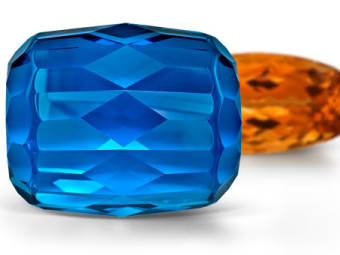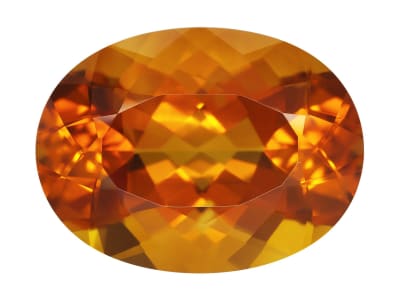What is Citrine?
Citrine is like owning a piece of the setting sun – it always radiates golden light! Citrine is prized for its excellent transparency and is one of the most popular gemstones in the quartz group.
Citrine FAQ
Here are answers to more frequently asked questions about November's birthstone:
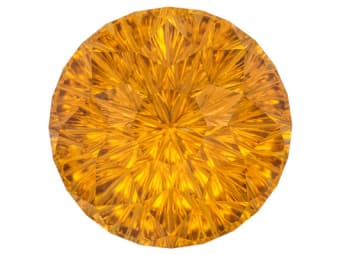
What color is the citrine birthstone?
Citrine has a limited color range compared to other gemstones. It comes in various shades of yellow to reddish-orange to brown. But where does citrine get its unique sunshine coloring? Citrine owes its radiant color to the presence of iron – which also happens to make the purple color in amethyst.
Unfortunately, naturally occurring citrine is not readily available as they are only found near volcanic activity. Amethyst or smoky quartz is heated in labs, which gives citrine gems their beautiful color.
- Yellow Citrine - Lemony yellow color (sometimes called Lemon Citrine)
- Golden Citrine - Golden yellow color
- Madeira Citrine - Golden orange to reddish brown color
- Fire Citrine - Deep orange color
- Palmeira Citrine - Bright orange color
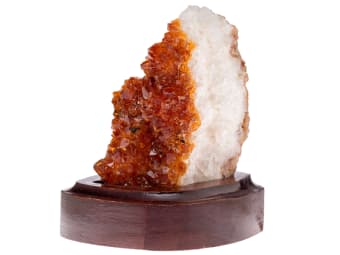
Where is citrine found?
Citrine is a world traveler and can be found all over. Some citrine ‘hotspots’ include Brazil, Namibia, Madagascar, Russia and the United States. Because citrine forms as a result of heating up amethyst or smoky quartz, it is found near magma activity.
What is citrine’s history?
Citrine dates all the way back to the Medieval Celts and Scots. They believed that citrine pendants would protect them against many things, including the plague, bad skin and evil thoughts. Medieval Scots even believed that citrine would heal snake bites from Scotland’s only venomous snake, the adder. In the 17th century, Scottish men would use citrine on the handles of their swords and daggers for decorative purposes - can you blame them?
In 1556, citrine’s name changed from ‘yellow quartz’ to what it is known today. Citrine gets its zesty name from the French word ‘citron’ which means lemon due to its beautiful yellow colors.
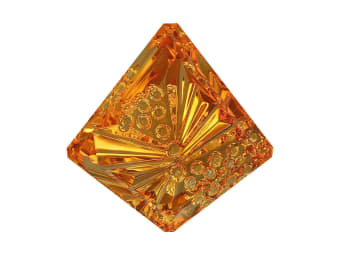
How is citrine formed?
Citrine is formed next to its sister stone, amethyst. The quartz crystals that form amethyst or smoky quartz are turned into citrine by heat from nearby magma activity. Today, amethyst or smoky quartz is heat-treated in labs to produce beloved citrine gems.
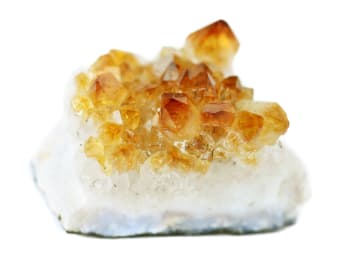
Did you know... Citrine is a member of the quartz family, the second most abundant mineral found on earth?
Citrine Gemstone Properties
For more facts and information about the characteristics of the November birthstone, check out the Citrine Gemopedia page.
Physical Properties of Citrine
Citrine ranks as a 7 on the Moh's Hardness Scale - making these gems pretty tough. The luster of citrine is vitreous, which just means that it has a smooth, glassy appearance.
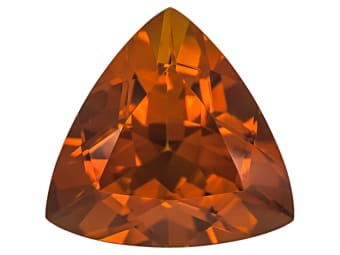
Healing Properties and Benefits of Citrine
With citrine’s vibrant sunny color, it’s no wonder that some people believe in its ability to radiate good vibes! Citrine has been used by many believers to get rid of negative energies so you can “pick up the pieces,” start fresh and feel sunny again. It is said that citrine gets its healing powers directly from the sun itself – kinda puts this gem in a different light when you think about it.
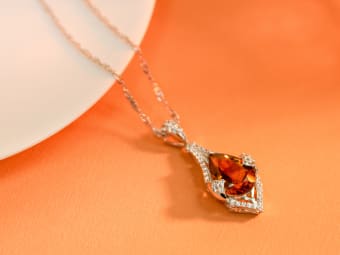
What is the spiritual meaning of November’s birthstone?
Citrine’s cheerful yellow hues are said to symbolize the spiritual quality of joy, abundance and change. Many believe that citrine can be used to bring a quick, energetic pick-me-up just like a refreshing glass of lemonade on a hot summer's day.
Colors of Citrine
The normal color range for citrine is limited compared to most gemstones. Citrine is found in various shades of yellow to reddish-orange to brown. Citrine owes its lively color to the presence of iron. The presence of this iron can cause a purple color, yellow color or a mix of the two appear in gemstones. This is where amethyst gets it purple color from, but when heat treated turns into yellow citrine.
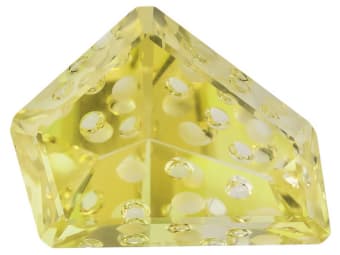
Citrine Color Variety
Citrine has a limited color pallet compared to most gemtsones. Here are the colors you are likely to find citrine in:
- Yellow
- Orange
- Brown
- Bi-color
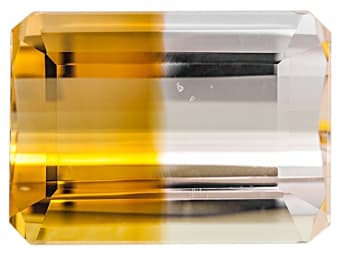
Did you know... Citrine is beautiful, affordable and available - three of the many reasons people enjoy this treasure of nature?
Citrine Birthstone Jewelry and Gifts
Calling all November babes! If you’re born in November, you are lucky enough to have citrine as your cheerful birthstone. Citrine boasts joyful yellow hues that will brighten up any look. But you don’t have to be born in November to enjoy these beautiful gems. Treat yourself or someone you love, with a bit of gemological sunshine.
Don’t be nervous about adding a bit of yellow to your wardrobe. Citrine jewelry can come in golden overtones that appear more neutral - making citrine a go-with-anything kinda gem.
Of course, if you aren’t afraid of being vibrant, citrine earrings that will make you radiate the sun, bringing cheer to your gloomy day. Get your hands on a radiant citrine necklace or ring to show your cheerful side and add a bit of sunshine to your look on a rainy day.
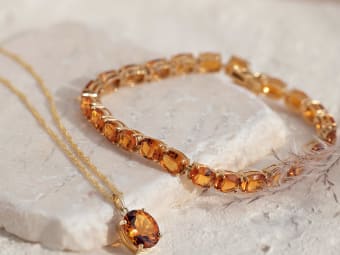
November Birthstone Alternatives
If you’re not a big fan of yellow and November born, you’re in luck! The alternative birthstone for November is topaz. Topaz was traditionally the birthstone for November and dates back to ancient calendars. The word ‘topaz’ was used in the medieval period to describe yellow gemstones, but we often enjoy topaz in blues today. Like citrine, topaz can symbolize optimism and is closely related to the sun.
